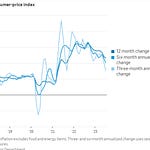Key Insights:
We should avoid the tendency to paint the past, nostalgically, as a golden age.
If we take the long view there is an overwhelming continuity in the immigrant experience.
The immigrant experience is a very positive story—both then and now.
There is great hope for positive change in our immigration system: comprehensive immigration reform is not a third rail in American politics.
Remember George Washington’s take on immigration: “The bosom of America is open to receive not only the Opulent and respected Stranger, but the oppressed and persecuted of all Nations and Religions; whom we shall welcome to a participation of all our rights and privileges, if by decency and propriety of conduct they appear to merit the enjoyment…”
There is a great deal right with America, but if we want to focus on what is wrong with America, look to intersectionality: what is happening to the sons of 1st-generation Caribbean-American immigrants?
Hexapodia!
References:
Ran Abramitzky & Leah Platt Boustan: Streets of Gold: America's Untold Story of Immigrant Success <https://www.amazon.com/Streets-Gold-Americas-Immigrant-Success/dp/1541797833>
Leah Platt Boustan: Competition in the Promised Land: Black Migrants in Northern Cities and Labor Markets <https://www.amazon.com/dp/B01GP3POLU/>
+, of course:
Vernor Vinge: A Fire Upon the Deep <https://archive.org/details/fireupondeep00ving_0/mode/1up>
Notes & Questions:
Americans vastly overestimate how many immigrants are in the country today. Americans guess 36% of the country is born abroad, whereas the real number is 14%.
The second biggest misconception is that immigrants nowadays are faring more poorly in the economy and are less likely to become American than immigrants 100 years ago. That is simply not true
Immigrants take steps to 'fit in' just as much today as they did in the past.
The children of Mexican parents do pretty well today! Even though they were raised at the 25th percentile in childhood, they reach the 50th percentile in adulthood on average. Compare that to the children of US-born white parents raised at the same point, who only reach the 46th percentile.
One of the main changes for Mexican immigrants in the 1980s and 1990s is that they settled in larger numbers away from "gateway" communities.
The children of poor Irish or Italian immigrant parents outperformed the children of poor US-born parents in the early 20th century; the same is true of the children of immigrants today—with the exception of the sons of 1st generation Caribbean-Americans.
Immigrants tended to settle in dynamic cities that provided opportunities both for themselves and for their kids. This makes sense: immigrants have already left home, often in pursuit of economic opportunity, so once they move to the US they are more willing to go where the opportunities are.
We suspect that educational differences between groups matter today. Immigrant families can pass along educational advantages to their children.
For kids in 1910 observed working in 1940, immigrants have lower levels of education than otherwise similar children of US-born parents, but yet they earn more. Why? Geography. Immigrants and their children lived in more dynamic locations (for example: in cities, and outside of the South).
Immigrants that people (somewhat disparagingly) call "low-skilled" are actually pretty selected: It takes a lot of bravery, motivation, and resourcefulness to pick up and move to a new country, especially without much money or connections or language skills.
What role did the Cold War and the Red Scare play in discouraging social movements and progressive legislation?
What were the effects of the early “computerized factory” on the labor market and on productivity?

















PODCAST: "Hexapodia" is þe Key Insight! XL: Coming to America Immigration Edition